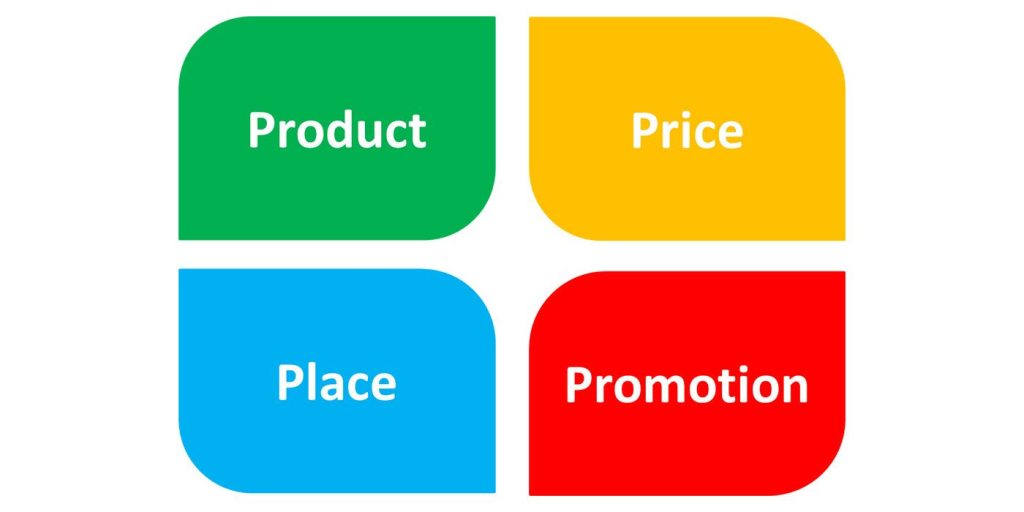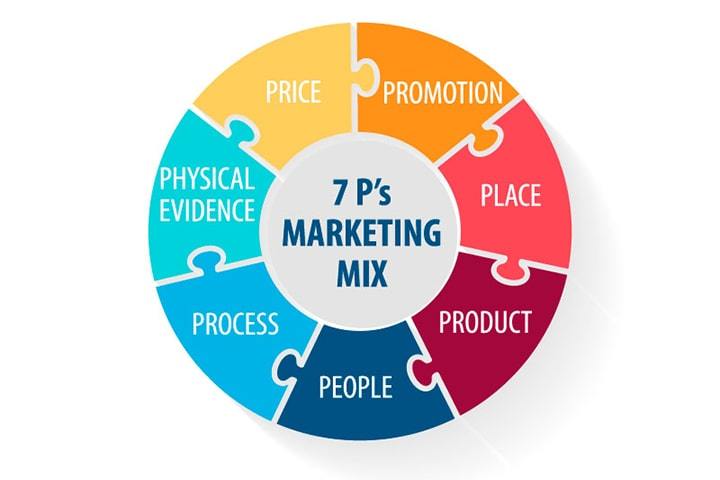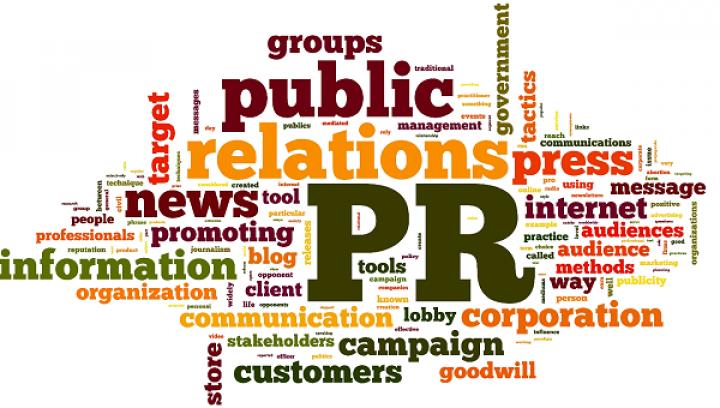Маркетинг-микс: концепция 4P, 7P, 9P
Что такое маркетинг-микс?
Маркетинг-микс – это стратегическая концепция, которая объединяет ключевые элементы маркетинга для достижения целей бизнеса. Этот подход позволяет компаниям оптимально сочетать различные аспекты, связанные с продуктом или услугой, их ценой, способами продвижения и методами распределения на рынке.
Каждый компонент маркетинг-микса имеет свою уникальную роль в создании и укреплении отношений с клиентами, формировании бренда и обеспечении конкурентоспособности на рынке. Основываясь на понимании потребностей и предпочтений целевой аудитории, компании строят свою стратегию маркетинга, используя соответствующее сочетание элементов микса, чтобы эффективно удовлетворять потребности клиентов и достигать успеха на рынке.
Маркетинг-микс 4P
Product: Продукт как основной элемент маркетинг-микса
Продукт – это один из ключевых элементов маркетинг-микса, и он олицетворяет то, что компания предлагает своим клиентам. Этот компонент включает в себя как физические товары, так и услуги, которые удовлетворяют потребности и желания целевой аудитории.
Стратегия продукта начинается с тщательного анализа рынка и потребительских требований. Необходимо понять, какие функции и особенности продукта будут наиболее привлекательны для целевой аудитории. Это может включать в себя дизайн, качество, функциональность и инновации.
Кроме того, брендирование также играет важную роль в создании узнаваемого и ценного продукта. Брендирование включает в себя создание уникального имиджа, логотипа, слогана и других элементов, которые помогают продукту выделиться среди конкурентов и создать эмоциональную связь с клиентами.
Price: Цена как стратегический инструмент
Ценообразование является одним из наиболее важных аспектов маркетинг-микса, и оно играет решающую роль в формировании восприятия клиентами стоимости продукта или услуги. Определение правильной цены – это сложный баланс между созданием прибыли для компании и одновременным обеспечением доступности продукта для целевой аудитории.
Цена может быть стратегическим инструментом для достижения различных целей. С одной стороны, правильное ценообразование может помочь компании привлечь внимание и создать интерес у клиентов, особенно если продукт предлагается по конкурентоспособной цене. С другой стороны, более высокая цена может служить индикатором высокого качества или статуса продукта, что подходит для премиум-сегмента рынка.
Promotion: Продвижение: коммуникация и реклама
Компонент “Promotion” в маркетинг-миксе представляет собой стратегию продвижения продукта или услуги на рынке. Этот аспект включает в себя разнообразные методы коммуникации и эффективной рекламы, которые позволяют компании достигать своей целевой аудитории, информировать ее о продукте и убеждать в его ценности.
Продвижение включает в себя множество инструментов, таких как реклама в СМИ, телевидении, радио, интернете, а также использование общественных медиа, социальных сетей и влияющих личностей. Кроме того, это также включает организацию мероприятий, выставок, конференций и других событий для привлечения внимания к продукту.
Цель продвижения – не только привлечь внимание клиентов, но и создать положительное восприятие бренда и убедить клиентов в ценности продукта или услуги. В этом контексте, ключевыми элементами являются ясное и привлекательное сообщение, которое подчеркивает уникальные характеристики и преимущества продукта.
Place: Место распределения продукта
Компонент “Place” в маркетинг-миксе олицетворяет стратегию распределения продукта или услуги, то есть способы, которыми они попадают от производителя к конечному потребителю. Этот аспект имеет важное значение, так как эффективное управление местом распределения обеспечивает доступность продукта для клиентов в нужное время в нужном месте.
Выбор оптимального канала распределения зависит от характеристик продукта, его рыночной ниши и потребительских предпочтений. Это может быть розничная сеть, дистрибьюторы, интернет-магазины, прямые продажи и другие варианты. Например, для товаров повседневного спроса, таких как продукты питания, важно иметь широкую сеть розничных магазинов, чтобы обеспечить доступность для потребителей. С другой стороны, для продуктов высокой стоимости или специализированных услуг, более узкие и специализированные каналы могут быть предпочтительными.
4p маркетинг-микс, пример
Вот пример маркетинг-микса для вымышленного продукта – инновационного смартфона “TechGizmo”:
- Продукт (Product): Смартфон “TechGizmo” – это высокотехнологичное устройство, которое объединяет передовые технологии и стильный дизайн. Он оснащен самыми последними функциями, включая мощный процессор, большой дисплей высокого разрешения, множество камер для высококачественной фотографии и передовую систему безопасности. “TechGizmo” предоставляет уникальный опыт использования для любителей технологий и стильных гаджетов.
- Цена (Price): Цена смартфона “TechGizmo” будет установлена на уровне премиум-сегмента, отражая его передовые характеристики и уникальные функции. Эта ценовая политика позиционирует продукт как эксклюзивный и престижный.
- Продвижение (Promotion): Для продвижения “TechGizmo” будут использованы различные стратегии. Кампания в социальных медиа позволит демонстрировать передовые технологии и визуальные аспекты устройства. Также будут проводиться презентации на технологических мероприятиях и конференциях для привлечения внимания к новому продукту. Сотрудничество с влиятельными блогерами и обзорщиками также поможет распространить информацию о “TechGizmo” среди целевой аудитории.
- Место (Place): “TechGizmo” будет доступен в премиум-магазинах электроники, включая крупные розничные сети и онлайн-платформы. Это обеспечит клиентам удобство приобретения продукта и создаст ассоциацию с высоким качеством и престижностью.
Этот пример маркетинг-микса иллюстрирует, как каждый из компонентов (продукт, цена, продвижение и место) взаимодействует, чтобы создать сильную позицию продукта на рынке и привлечь целевую аудиторию.
Маркетинг микс 7P
Помимо оригинальной концепции 4P, маркетологи начали придавать больше значения дополнительным аспектам, что привело к развитию такой концепции, как модель 7P.
People: Люди
В маркетинге, а также в бизнесе в целом, понимание и управление человеческим фактором играют решающую роль в создании успешной организации. Компонент “People” в маркетинг-миксе подразумевает не только сотрудников компании, но и клиентов, которые являются центром внимания и целью всех маркетинговых усилий.
Сотрудники компании – это те, кто непосредственно взаимодействует с клиентами и олицетворяет бренд перед ними. Профессиональное обслуживание, дружелюбность и знание продукта со стороны персонала могут существенно влиять на опыт клиентов и их лояльность к бренду. Обучение, мотивация и создание благоприятной рабочей атмосферы – важные аспекты, которые способствуют эффективному взаимодействию персонала с клиентами.
Также клиенты играют важную роль в компоненте “People”. Понимание и учет их потребностей, предпочтений и ожиданий являются фундаментом успешной маркетинговой стратегии. Создание уникального опыта для клиентов, который удовлетворяет и превосходит их ожидания, может способствовать повышению лояльности и рекомендациям бренда.
Process: Процессы
В мире бизнеса, эффективные процессы имеют важнейшее значение, определяя способ организации, выполнения и управления операциями компании. В контексте маркетинг-микса, компонент “Process” олицетворяет всю последовательность действий, которые компания выполняет для создания, предоставления и поддержания своих продуктов или услуг.
Процессы охватывают широкий спектр деятельности, начиная от разработки продукта и завершая обслуживанием клиентов после покупки. Оптимизированные и хорошо спланированные процессы позволяют компании достичь более эффективного использования ресурсов, минимизировать издержки и максимизировать качество продукции или услуги.
Процессы также оказывают прямое влияние на восприятие клиентами бренда и уровень их удовлетворенности. Систематичность и плавность всех этапов взаимодействия с клиентами – от оформления заказа до доставки или оказания услуги, и далее до поддержки после продажи – играют роль в формировании положительного опыта.
Эффективные процессы в маркетинге также могут включать автоматизацию и использование технологий, которые способствуют оптимизации и упрощению операций. Например, автоматизированные системы управления клиентскими данными или процессами обслуживания клиентов могут улучшить общий опыт взаимодействия и сократить временные задержки.
Physical evidence: Окружение
Physical evidence играет важную роль в визуальных и физических аспектах, которые влияют на восприятие продукта или услуги клиентами. Это включает в себя все, что может подтвердить или усилить восприятие бренда, его качества и ценности.
Окружение включает в себя такие аспекты, как дизайн магазинов или офисов, упаковка продукта, внешний вид и оформление точек продажи. Примером может послужить привлекательный, и уникальный дизайн магазина, который может создать положительное первое впечатление у клиентов и усилить восприятие бренда как стильного и качественного.
Упаковка продукта также играет важную роль в создании визуальной привлекательности и защите продукта. Хорошо спроектированная упаковка может быть не только функциональной, но и эмоционально привлекательной, создавая у клиентов желание приобрести продукт.
Дополнительные элементы, такие как материалы для оформления точек продажи, информационные материалы или даже одежда персонала, также могут служить как физические доказательства качества и ценности бренда. Важно, чтобы все эти элементы соответствовали имиджу и ценностям компании, а также создавали единое и целостное восприятие бренда.
Маркетинг микс 7p, пример
Концепция маркетинг-микса расширяется до 7P, включая дополнительные элементы, которые помогают учесть аспекты, связанные с услугами и маркетингом. Вот пример маркетинг-микса 7P для компании, предоставляющей услугу ремонта и обслуживания автомобилей “AutoCare”:
- Продукт (Product): в данном случае, продуктом является услуга ремонта и обслуживания автомобилей. “AutoCare” предоставляет широкий спектр услуг, включая механический ремонт, замену деталей, диагностику, техническое обслуживание и т.д. Важно поддерживать высокое качество и надежность выполняемых работ.
- Цена (Price): цены на услуги “AutoCare” будут определяться исходя из сложности работ и типа услуги. Прозрачная система ценообразования и гибкая политика скидок помогут привлечь и удержать клиентов.
- Продвижение (Promotion): Рекламные мероприятия “AutoCare” могут включать создание профессионального веб-сайта, настройку аккаунтов в социальных медиа, рассылку электронных писем о специальных предложениях и скидках. Также важны рекомендации довольных клиентов и партнерства с автосалонами.
- Место (Place): “AutoCare” может иметь физические точки обслуживания в удобных для клиентов местах, например, вблизи автосалонов или в промышленных районах. Также важно предоставлять услуги на месте (например, дорожная помощь) и в онлайн-режиме.
- Люди (People): качество обслуживания зависит от профессионализма сотрудников “AutoCare”. Необходимо иметь высококвалифицированный персонал, обученный обслуживанию автомобилей, и обеспечивать приветливую и профессиональную обстановку для клиентов.
- Процессы (Processes): оптимизированные и эффективные процессы ремонта и обслуживания позволят снизить временные затраты и обеспечить качество работ. От слежения за запасами до управления заказами – все процессы должны быть хорошо настроены.
- Физическое окружение (Physical Evidence): физическое окружение включает в себя все, что воспринимается клиентами: внешний вид точек обслуживания, оборудование, логотипы и узнаваемость бренда. Привлекательная и чистая среда важна для создания доверия клиентов.
Этот пример маркетинг-микса 7P демонстрирует, как компания, предоставляющая услугу, может эффективно управлять разнообразными аспектами, чтобы создать положительное впечатление у клиентов и обеспечить высокое качество обслуживания.
Маркетинг микс 9P
PR – связи с общественностью
PR, или связи с общественностью, является важным аспектом маркетинг-микса, который фокусируется на установлении и поддержании позитивных отношений между компанией и ее разнообразной аудиторией. Это включает в себя создание и поддержание положительного имиджа компании в глазах общественности, клиентов, инвесторов, партнеров и других заинтересованных сторон.
Связи с общественностью включают разнообразные стратегии и тактики, которые помогают компании эффективно коммуницировать с разными группами людей. Это может быть взаимодействие с журналистами и СМИ для распространения информации о компании, организация мероприятий и пресс-конференций, а также вовлечение в социальные и общественные инициативы.
Цель PR – создание положительного образа компании и формирование долгосрочных отношений с клиентами и общественностью в целом. Правильно настроенные связи с общественностью могут способствовать укреплению доверия, повышению лояльности клиентов и даже влиять на их решения о покупке. Они также могут помочь управлять кризисными ситуациями и минимизировать отрицательное воздействие на репутацию компании.
Partnerships – долгосрочные отношения
Создание долгосрочных партнерских отношений является важным элементом успешной бизнес-стратегии, позволяя компании сотрудничать с текущими клиентами и другими организациями для взаимной выгоды.
Партнерства могут быть разнообразными – от стратегических альянсов до сотрудничества на уровне поставщика и дистрибьютора. Долгосрочные партнерства могут принести множество преимуществ. Они позволяют компаниям объединить ресурсы, экспертизу и опыт для совместной разработки новых продуктов, услуг или решений. Такие сотрудничества могут увеличить конкурентоспособность, расширить клиентскую базу и создать новые возможности для роста.
Партнерства также могут способствовать расширению географического охвата и доступу к новым рынкам. Это особенно полезно в случае, если компании работают в разных регионах или странах. Совместные усилия позволяют улучшить дистрибуцию и удовлетворить потребности клиентов в разных частях мира.
Кроме того, долгосрочные партнерства могут также помочь компаниям улучшить репутацию и создать позитивный образ. Сотрудничество с надежными и успешными партнерами может отразиться на восприятии бренда клиентами и инвесторами.
Создание и поддержание долгосрочных партнерских отношений требует внимания к взаимным интересам, установлению четких правил сотрудничества и способности адаптироваться к изменяющимся условиям рынка. В итоге, такие партнерства способствуют росту и устойчивости компании в долгосрочной перспективе.
Пример маркетинг-микса 9P
Вот пример маркетинг-микса 9P для компании, предоставляющей экологически чистые товары для дома “EcoHome”:
- Продукт (Product): “EcoHome” специализируется на производстве и продаже экологически чистых товаров для дома, таких как органическая уборка, биоразлагаемые упаковки и энергоэффективные устройства. Продукция направлена на удовлетворение потребностей потребителей, стремящихся к экологически ответственному образу жизни.
- Цена (Price): цены на товары “EcoHome” будут соответствовать премиум-классу, отражая уникальность и экологическую ценность продукции. Экологически сознательные потребители готовы платить больше за товары, которые способствуют охране окружающей среды.
- Продвижение (Promotion): маркетинговая кампания “EcoHome” будет акцентировать на преимущества экологической продукции, ее влияние на окружающую среду и личное благополучие. Реклама будет ориентирована на социальные медиа, благотворительные мероприятия и партнерства с экологическими организациями.
- Место (Place): продукция “EcoHome” будет доступна через онлайн-платформу с удобным интерфейсом и уделяющей внимание экологическому образу жизни. Также будет организована возможность покупки продукции в магазинах с эко-направленностью.
- Люди (People): команда “EcoHome” состоит из экологически осознанных и образованных сотрудников, способных предоставлять консультации клиентам о пользе и использовании продукции.
- Процессы (Processes): процессы “EcoHome” включают экологически ответственное производство, переработку и утилизацию. Компания стремится к минимизации воздействия на окружающую среду на всех этапах производства и снабжения.
- Физическое окружение (Physical Evidence): экологическая философия “EcoHome” будет отражена в дизайне и обстановке магазинов, сайта и упаковок продукции. Это поможет создать связь между продукцией и ценностями бренда.
- PR (Public Relations): стратегия PR будет включать в себя организацию событий, пресс-конференций и публикаций в медиа с целью распространения информации о бренде, его ценностях и экологической миссии.
- Партнерства (Partnerships): “EcoHome” будет устанавливать партнерства с экологическими организациями, благотворительными фондами и другими брендами, разделяющими экологические ценности. Это поможет расширить аудиторию и укрепить позицию бренда.
Заключение
Маркетинг-микс, охватывающий компоненты 4P, 7P и 9P, представляет собой мощные инструменты, которые помогают компаниям стратегически управлять своими продуктами, услугами и брендами на рынке. Каждый компонент – продукт, цена, продвижение, место, люди, процессы, физическое доказательство, PR и партнерства – играет свою уникальную роль в формировании успешной бизнес-стратегии.
Эксперт в области интернет-маркетинга. Руководитель маркетингового агентства MAVR.
Бизнес-степень «Мастер делового администрирования» (MBA).




